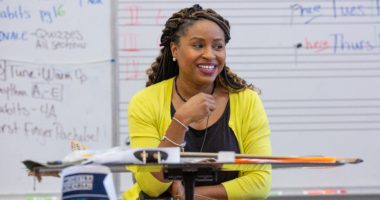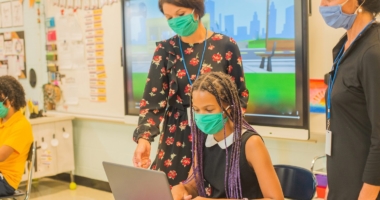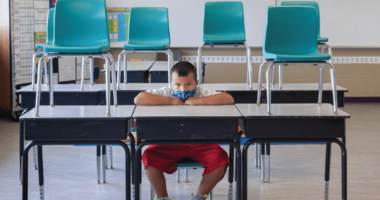Promising Practices of Distance Learning During COVID-19
Most schools are now several weeks into distance learning, and many districts are striving to address the myriad challenges in serving students with a focus on equity. One such school district is Alexandria City Public Schools (ACPS) in Virginia, where school buildings are closed through the remainder of the academic year.
In ACPS, about 56% of students qualify for free- and reduced-price meals. With school doors shuttered, thousands of Alexandria students from low-income backgrounds would have faced food insecurity and hunger. But over the last few weeks, the district has distributed more than 160,000 meals via school-based food distribution centers and “grab-and-go” meal pickup locations at community centers and residential complexes across the city.
Once children’s basic needs can be met, learning can take place. Through ACPS’ one-to-one computing initiative — which has been in place for several years — every student in grades three through 12 has a district-issued Chromebook. Once schools closed, teachers in many schools began keeping track of which students were logging into their computers and which were not — using this data as an early-warning indicator to identify children who may need supports across academic, social-emotional, and other areas.
According to Jesse Mazur, principal of ACPS’ George Washington Middle School: “If you’re struggling with the internet, chances are you’re dealing with issues that are far bigger than connectivity,” he said. “Part of our planning from the beginning [was] understanding that for some of our students —disproportionately our students of color and students from low-income families — education is the furthest thing from their current reality, which is one of survival,” he added. “We have to keep that in mind in everything that we’re doing, and get them the support they need.”
Once students are identified, the school’s Student Support Team mobilizes. If internet access is an issue, the team works with the district to ensure the student receives one of more than 700 hotspots that are being shipped to students’ homes. ACPS also is outfitting vehicles to provide free wi-fi in neighborhoods of concentrated need. The team also can connect children to the district’s school counselors, nurses, psychologists, and social workers who are teleworking. Additionally, an online resource hub created by the district, ACPS-At-Home, offers students and their families links to mental health services and emergency supports, including help with rent, clothing, and utilities. It’s also where the superintendent, Dr. Gregory C. Hutchings, Jr., sends regular updates and posts videos on topics ranging from school schedules to tech support.
Perhaps one of the biggest challenges of at-home learning is serving children in preschool through second grade, who thrive on face-to-face interaction with teachers. While acknowledging that nothing can replace quality in-person early childhood educational experiences, ACPS is providing pre-recorded lessons via the local access television station, enrichment activities, and virtual story hours.
During this pandemic, teachers and school leaders also are finding new means of communicating with students — whether that’s through calls and emails, or video conversations and digital office hours, messages of encouragement uploaded to learning portals, or talks streamed through Facebook Live.
ACPS offers sample schedules to structure the “at-home school day,” including for students with disabilities. There also are learning packets mailed home and electronic resources. The district recently launched a new Instructional Continuity Plan, which is designed to support ongoing instruction and reinforce educators’ connection with students and families through the start of summer.
Distance education at ACPS is a mix of synchronous learning — online instruction provided by a teacher with student participation in real time — and asynchronous learning — instruction that has been pre-recorded and can be accessed by students at any time, with options to engage teachers as necessary for additional support.
Elizabeth Hoover, the district’s chief technology officer, notes, “Because we’ve got parents with busy schedules, children who may be managing different responsibilities, teachers who are home with their own kids, and households where it might be difficult to have multiple children on devices learning at the same time, we’re trying to [encourage] both approaches to learning.”
Hoover hopes one of the biggest lessons learned from this crisis will be that teachers feel empowered to use technology differently once they return to school. “Teachers are exploring, they’re finding out what works and what doesn’t work for them on a larger scale than before. I think education, and education technology as a whole, will benefit from that.”
For more stories on how school districts are adapting to the coronavirus pandemic, tune in to Ed Trust’s podcast, Extraordinary Districts in Extraordinary Times, available where you get your podcasts.












